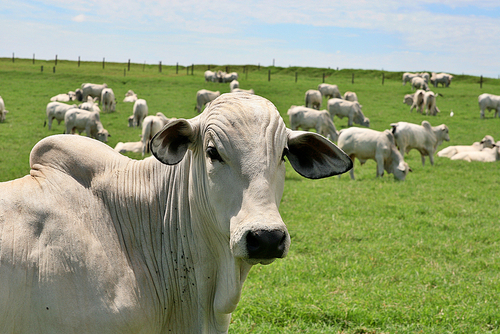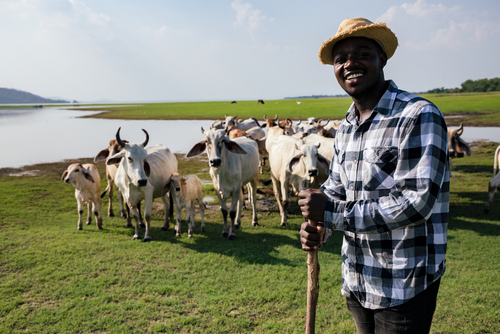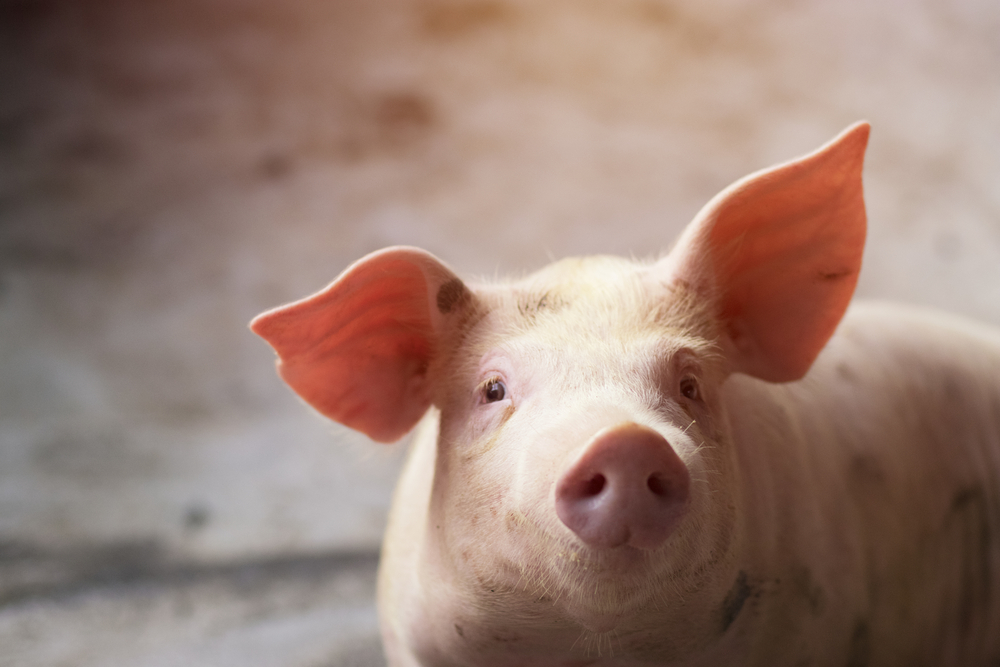
We understand the difficulties many people face with full-time study and offer study by distance learning
Why study a 240-hour individual module?
The modules of the Veterinary Epidemiology and Public Health programme are also offered as stand-alone modules for Continuing Professional Development.

In Brief
- Sample our studies before committing to the full degree programme (MSc, Pg Diploma or Pg Certificate);
- Study alongside the degree programme students;
- Assessment includes a 4-hour, online written examination and compulsory Tutor Marked Assignment;
- Application deadline: 15 December (studies commence February)
Modules
* Also a Core module of the degree programme
RVC INSIDERS
The module ‘Management of Infectious Disease Outbreaks in Animal Populations’ is one of my favourite subjects because the knowledge that I gained can be directly applied to control many infectious diseases endemic in local situations. Specially, during outbreak investigation and public awareness programs.
— Anushka Lenagala, MSc in Livestock Health and Production, Sri Lanka (December 2022)
African Swine Fever (ASF) was first reported in China in 2018 and caused a dramatic economic loss in the pig industry. The learnings enable me to investigate the epidemiological study of ASF and assess the cause-effect relationships to provide valuable information for decision-making at the farm level with animal health economic factors taken into consideration.
— Shuaibiao Wang, Pg Diploma in Veterinary Epidemiology and Public Health, China (December 2022)

These 50-hour modules are taken from the Veterinary Epidemiology and Public Health programme and enable you to study without committing to a full module.
In Brief
- Suitable for non-graduates or graduates
- No entrance, or English language requirements


- No application deadline
- Successfully complete the assignment and receive a Certificate of Achievement
- Course materials are offered online via the Virtual Learning Environment
- Academic assistance offered with course queries. No academic tutorials, or personal tutor.
- A one-year registration period is offered
Modules
Risk analysis is being used increasingly in animal health, particularly in relation to trade. It therefore has become essential for people working in animal health policy to have a basic understanding of the terminology and methods used in risk assessment. This module aims to give you that basic understanding, with particular emphasis on qualitative and quantitative risk assessment. The final part of the course explores quantitative risk analysis and demonstrates how you can use the frameworks and probability theory to build a simple quantitative model.To do this you will be working with a software package called @RISK.
Animal disease surveillance is one of the key functions of animal health services. It has become more important in the last twenty years with the increasing concern for food safety and the emergence of new and exotic diseases, along with the traditional role of measuring disease and monitoring the control of endemic diseases. The evaluation of surveillance is another integral part of any system and must be considered at design stage. This module will introduce you to the principles of disease control, the components of such programmes and their implementation and evaluation, focused on infectious diseases. The detailed description of the traditional disease control strategies will provide you with a deep understanding of the complexity of the decision-making process and how epidemiological tools can help in the control and eradication of animal diseases at regional and national level.
This module is concerned primarily with microbiological aspects of food safety in the production of red and poultry meat, eggs, milk and milk products. Methods to reduce microbiological contamination in meat during the entire production chain, from farm – slaughterhouse – to the retail outlet are discussed. The module also enables students to understand the importance of contaminated shell eggs, and products derived from them, as vehicles for human infection, principally that caused by salmonella enterica serovar enteritidis. In the final part of the module infections that may be transmitted to the human population via milk and milk products and methods to reduce such contamination are described.
This module will introduce you to observational and intervention studies that are conducted on populations.The module will demonstrate techniques for measuring association between disease and risk factors from these studies. You will learn about the subtle but important differences between the measures of association and the most suitable application for each measure. The strengths and weaknesses of these studies will be presented and the statistical testing requirements will be discussed.
This module is designed to explain the basic concepts of statistics and provide a basic introduction to statistical analysis in veterinary and animal health fields. You will also learn about the principles of hypothesis testing, concepts of sampling, study design and parametric and nonparametric methods of data analysis. It is assumed that you have not previously attended any statistics modules, so that the whole subject of statistical analysis is new to you.
In this module the diverse nature of Veterinary Public Health (VPH) is explored and your perceptions of what constitutes VPH are challenged. This introductory module to VPH will introduce you to the concept that food can constitute a hazard to human health, and will show you how to measure the risk to consumer health. It is aimed to give a basic understanding of risk analysis, with particular emphasis on qualitative and quantitative risk assessment.
This module will introduce the concept that foods can be hazardous and examines how to control food safety hazards throughout the chain of production, storage and distribution. Suitable control measures to avoid food poisoning bacteria and viruses that may contaminate ready-to-eat food are also identified. In the second part of the module an overview of the controversial subject of the veterinary use of antibiotics, the associated problem of antibiotic resistance, and the implications for public health is discussed. The module will provide you with the necessary tools to make an objective judgement of this topic.
This module is intended to provide you with an overview of the scope of modern epidemiology and to introduce the basic concepts of epidemiological investigations. The module will introduce methods for describing the frequency of disease occurrence in animal populations, including risks and rates. During the module you will examine the technique of making inferences about large populations on the basis of examination of a sample. You will learn about the techniques required for the effective sampling of populations and examine the statistical assumptions that underpin sampling theory. The module emphasises the practical use of sampling theory to answer epidemiological questions, giving examples of how sampling techniques may be used effectively in epidemiological investigations.
This module will introduce the principles of economic analysis and a number of tools used to aid decision-making in the field of animal health economics. This is a very practical module, throughout which you will learn how to use the tools in a number of activities and case studies at the same time as gaining an appreciation of the issues involved so as to be able to critically review the work of others. It is assumed that you have not previously studied animal health economics, so that the whole subject is new to you.
This module will provide an overview of some major zoonotic diseases, their epidemiology and their control. It considers some emerging and re-emerging zoonoses that are of importance to human health. The module is subdivided to allow separate coverage of parasites, bacteria, and finally viruses, rickettsia and prions.

We understand the difficulties many people face with full-time study and offer stand-alone modules to study by distance learning
These 35-hour modules are taken from the Veterinary Epidemiology and Public Health programme and enable you to study without committing to a full module.
In Brief

- Suitable for non-graduates or graduates
- No entrance or English language requirements
- No application deadline and you may apply immediately
- Successfully complete the Assignment and receive a Certificate of Achievement
- Course materials are offered online via our Virtual Learning Environment (VLE)
- Academic assistance offered with course queries. No academic tutorials or personal tutor.
- A one-year registration period is offered
Modules
In this module you will learn about the animal welfare issues involved in the handling, transport, and slaughter of livestock. You will learn about the behavioral principles of animal handling, animal welfare issues that arise during transport and the importance of well-designed and managed pre-slaughter handling systems. At the end of the module you will be able to provide advice on the design and management of facilities for loading and unloading animals, lairages, races, stockyards, and restraint equipment to prevent transport-related animal welfare problems. Implementation of auditing systems to maintain high levels of welfare during transport, handling and slaughter is an essential component of the knowledge gained.
This module will introduce you to diagnostic decision-making, a process which most clinicians deal with by combining factual knowledge, experience and intuition. The application of epidemiology to the improvement of livestock health and production requires responsible management of disease information. From collecting data on milk production from a single dairy farm to using country-wide disease data to determine national livestock import policies, careful and appropriate data management is essential. This module will introduce you to the types of data you might encounter, methods of collecting and storing those data, and some of the many epidemiological tools available to extract as much information as possible for production and disease management decisions.
This module on farm animal health economics will provide you with an introduction to the role that economics plays in decision making in the field of animal health.You will start by looking at the sorts of issues that might be involved, and the different perspectives from which issues can be considered. You will then go on to learn about important concepts used in animal health economics before preparing for the practical work in the module by reading about the tools used by animal health economists. The final part is a very practical session which will take you through the steps involved in calculating the output of livestock enterprises.
This module concentrates on the methodologies used for decision making in the field of animal health and production. The emphasis will be to explain the basic principles involved and will enable you to familiarise yourself with the techniques of partial and benefit-cost analysis through a series of exercises. The course will also provide you with knowledge to critically assess work done by others. Finally the module will present some of the economic tools that can be used to analyse the risk and uncertainty associated with livestock production.

These non-credit bearing Spatial Epidemiology modules are taken from the Veterinary Epidemiology and Public Health programme and enable you to study a stand-alone unit without committing to a full module.
In Brief
- Successfully complete the assignment and receive a Certificate of Achievement.
- Dependent upon the module taken, the study pack may include a combination of both hard copy and online materials. (Note: Module 'V70' is offered online only.)
- A two-year registration period is offered. No application deadline.
- Entrance requirements are a degree, or a technical, or professional qualification and work experience considered appropriate and relevant

Modules
Geographic Information Systems in the Spatial Analysis of Animal Diseases (35 hour module, course code: V35-1)
The module consists of two units:
- Introduction to geographic data, and
- Using a geographic information system
Please view the Module Introduction for further information
Exploring and Modelling of Spatial Data in Veterinary Epidemiology (35 hour module, course code: V35-2)
The module consists of two units:
- Exploring of spatial data, and
- Modelling of spatial data
Please view the Module Introduction for further information (Pre-requisite: To study, you must have studied the 2-units covered in module V35-1 (above).
Investigation of Spatial Patterns of Animal Disease (70 hour module, course code: V70)
The module consists of four units:
- Introduction to geographic data
- Using a geographic information system
- Exploring of spatial data, and
- Modelling of spatial data
Please view the Module Introduction for further information
Software requirement
These modules require access to Arc View 8.0, plus the extensions, Spatial Analyst and 3D Analyst.
The cost of the GIS software is NOT included in the course fee and you will need to purchase it, if you do not have access to it already.
For details of how to purchase the software: United Kingdom students, please contact the Course Administrator/Outside of the United Kingdom, please contact ESRI and select your country of residence
To register
Please email your completed registration form and Curriculum Vitae to the Course Administrator.
The Programme Fees below refer to the 2024 session

Individual Modules
| 240-hour |
£2,482 |
| 50-hour |
£912 |
| 35-hour |
£684 |
Spatial Epidemiology Individual Modules
| 70-hour |
£600 |
| 35-hour |
£310 |
Discounts available
Completing students
- 20% discount is offered to students - having successfully completed a 240-Hour Individual Module and now registering for the full award (Postgraduate Certificate, Postgraduate Diploma, or MSc programme in Veterinary Epidemiology and Public Health
Sorry there are no items that match your filters.







